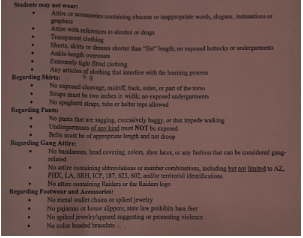Do Seating Charts Affect Students’ Performance?
December 14, 2022
Even if it goes unnoticed, your attitude, feelings, and behaviors can all be easily reflected by your environment. So when it comes down to academic performance, this is important to keep in mind.
Classroom seating charts play an important role in students’ performance. Of course the obvious chatter and misbehavior from their peers can be distracting, but more factors play into a student’s productivity. Students should be seated by people they can work well with and using randomized seating charts does not always guarantee this. Though teachers can not know for sure if someone will connect with their desk partner/group, they should still have a good idea of who their students are as individuals; and thus, who would make a good team. In the creation of a seating chart, strategic placement provides students with structure, and benefits their work.
Ideally, students would be able to work with anyone they are unfamiliar with or even resent, but no adolescent is perfect. Who they are paired with can even sway their motivation to attend class. For instance, imagine having a morning full of bad luck, exhaustion, or even sickness, all while your least favorite class still hangs above your head. This can inspire a lack of motivation, not necessarily because the material in class may be hard or boring, but because the people you sit around make you uncomfortable. Sometimes, it truly is not the other students’ intention to cause this, but other times their behavior or actions can simply be on purpose, which can result in resentment and low effort put in the class.
According to the article “Who You Surround Yourself With Matters” by Andrew Quagliata, “If your network exhibits a specific behavior, that changes your perception of typical behavior and your behavior changes accordingly”. Quagliata also notes that humans are both positively and negatively influenced by others. Suppose that a rather introverted student is sat by someone who actively engages in classroom discussions, they too may be influenced to participate. If a couple students at a table are messing around, the whole group could be affected, and conform by feeling less inclined to engage in the work.
Day-to-day, who we are surrounded by impacts us, which plays a major role in academics. Well-structured and thoughtful seating charts can immensely influence students’ work, attitude, and behaviors.







































